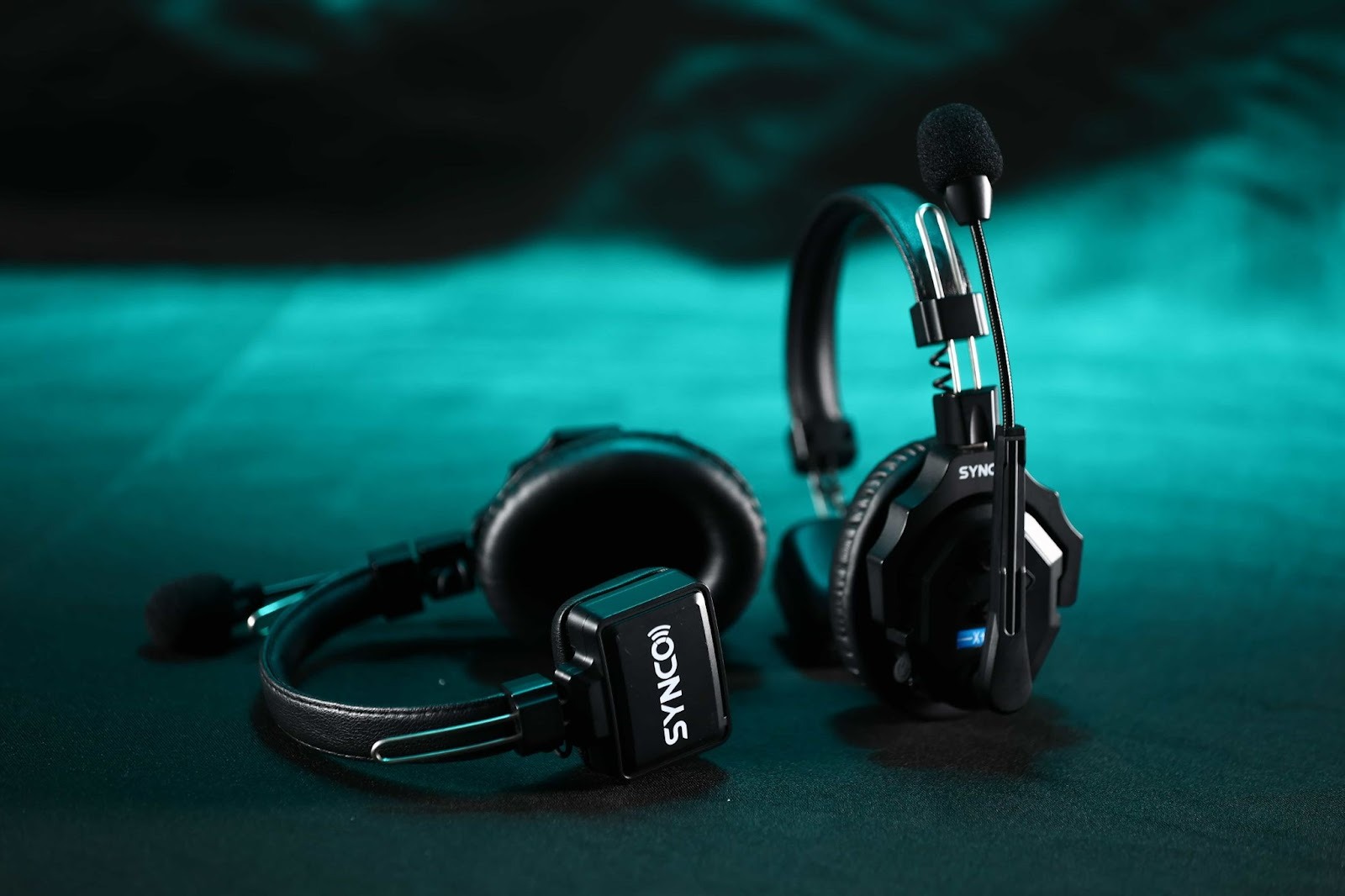In today’s fast-paced professional environments - whether live events, security, aviation, or broadcasting - clear and efficient communication is more important than ever. Wireless intercom headsets have transformed the way teams stay connected, offering hands-free, real-time communication that keeps everyone coordinated, productive, and on the move. This guide will help beginners understand the different types available, how to choose the right one for your needs, and how to use them effectively.

What Is the Wireless Intercom Headset
A wireless intercom headset is a communication device that allows users to talk and listen without the need for cables. These devices enable seamless and hands-free communication over a certain distance.
Depending on how communication is handled, wireless intercom headsets can be categorized into three main types: full-duplex, half-duplex, and simplex.
Full-Duplex Wireless Intercom Headset
The full-duplex wireless intercom headset allows both parties to speak and listen simultaneously, similar to a regular phone call. This type is ideal for fast-paced environments where real-time communication is critical, such as live events, broadcasting, or professional productions.
Half-Duplex Wireless Communication Headset
Half-duplex headsets let only one person speak at a time while the other listens. Users typically press a button to talk and release it to listen. This setup is common in event coordination or security teams, where clear but controlled communication is sufficient.
Simplex Wireless Intercom Headphone
Simplex headsets operate in one direction only at a time, usually for announcements or guided tours. The communication is strictly one-way, making them suitable for situations where a single source of information needs to be broadcast to multiple listeners.
When You Need These Wireless Communication Headsets
Wireless intercom headsets are designed to make communication faster, clearer, and more convenient, especially in situations where hands-free operation is important. Here are some common scenarios where these headsets are particularly useful:
- Event Coordination: Whether you’re managing a concert, conference, or live show, full-duplex or half-duplex headsets help your team stay in constant communication without shouting across the venue.
- Film and Video Production: Directors, camera operators, and crew members can coordinate movements and camera angles efficiently using full-duplex wireless headsets. Real-time communication ensures smoother shoots and fewer retakes.
- Security and Patrol: Security teams benefit from half-duplex or full-duplex headsets to relay instructions instantly while keeping their hands free for other tasks.
- Outdoor Adventures: Tour guides, hiking leaders, or team sports coaches can use simplex or half-duplex headsets to communicate with groups over a distance, ensuring safety and organization.
- Retail or Business Operations: In busy stores or warehouses, employees can coordinate tasks, track inventory, or provide customer assistance efficiently without leaving their stations.
No matter the environment, these headsets streamline communication, reduce errors, and improve team efficiency.
How to Choose the Best Wireless Intercom Headset
Selecting the right wireless intercom headset depends on your specific needs and the environment where you’ll be using it. Here are some key factors to consider:
- Communication Mode: Decide whether you need full-duplex, half-duplex, or simplex. The full-duplex wireless intercom headset is best for fast-paced, real-time interactions, half-duplex works well for controlled team communication, and simplex is suitable for one-way broadcasting.
- Range and Coverage: Check the operating distance of the headset. For small rooms or offices, a shorter range may suffice, but for outdoor activities, large venues, or events, a longer range ensures reliable communication.
- Battery Life: Consider how long the headset can operate on a single charge. If you’ll be using it for long events or shooting sessions, choose a model with extended battery life or quick-recharge options.
- Comfort and Fit: Since these headsets are worn for extended periods, look for lightweight, adjustable designs with comfortable ear pads or headbands.
- Audio Quality and Noise Cancellation: Clear communication is crucial. Headsets with noise-canceling microphones and crisp audio ensure messages are understood, even in noisy environments.
- Compatibility and Connectivity: Make sure the headset works with your devices, whether it’s a phone, camera, or radio system. Some headsets also support multiple channels for team coordination.
- Durability and Build Quality: If you plan to use the headset outdoors or in demanding environments, look for robust construction that can withstand drops, sweat, or weather conditions.
By keeping these factors in mind, you can choose a wireless intercom headset that meets your workflow, ensures smooth communication, and enhances overall efficiency.
How to Get Smooth Communication with Wireless Headsets
To get the most out of your wireless intercom headset, consider these practical tips:
- Test the Connection Before Use: Always check the wireless connection and channels before starting your activity or event. This ensures smooth communication without interruptions.
- Adjust Volume and Microphone Settings: Customize volume levels for both listening and speaking to match your environment. Proper adjustment prevents feedback and ensures clear audio for everyone.
- Use the Right Communication Mode: Choose full-duplex for real-time conversations, half-duplex for controlled talk-and-listen setups, or simplex for one-way announcements. Matching the mode to your scenario improves efficiency.
- Keep the Headset Secure: For active use, make sure the headset fits snugly. Adjust headbands or earpieces to prevent slipping during movement.
- Maintain Battery Levels: Charge headsets fully before long sessions, and consider having spare batteries or power banks handy for extended use.
- Minimize Interference: Avoid placing the headset near other wireless devices that may cause signal interference. Choosing dedicated channels helps maintain stable communication.
- Practice Team Etiquette: For multiple users, establish simple talk rules, like pressing the button to speak in half-duplex systems or muting when not talking, to keep conversations clear and organized.
Following these tips helps ensure reliable performance, clear audio, and a smoother experience whether you’re filming, coordinating events, or managing a team.
Conclusion
Wireless intercom headsets make communication faster, clearer, and more convenient across a wide range of scenarios—from vlogging and live streaming to event coordination and team operations. By understanding the different types (full-duplex, half-duplex, and simplex), considering key factors when choosing a headset, and following practical usage tips, you can ensure smooth and reliable communication for any situation.






